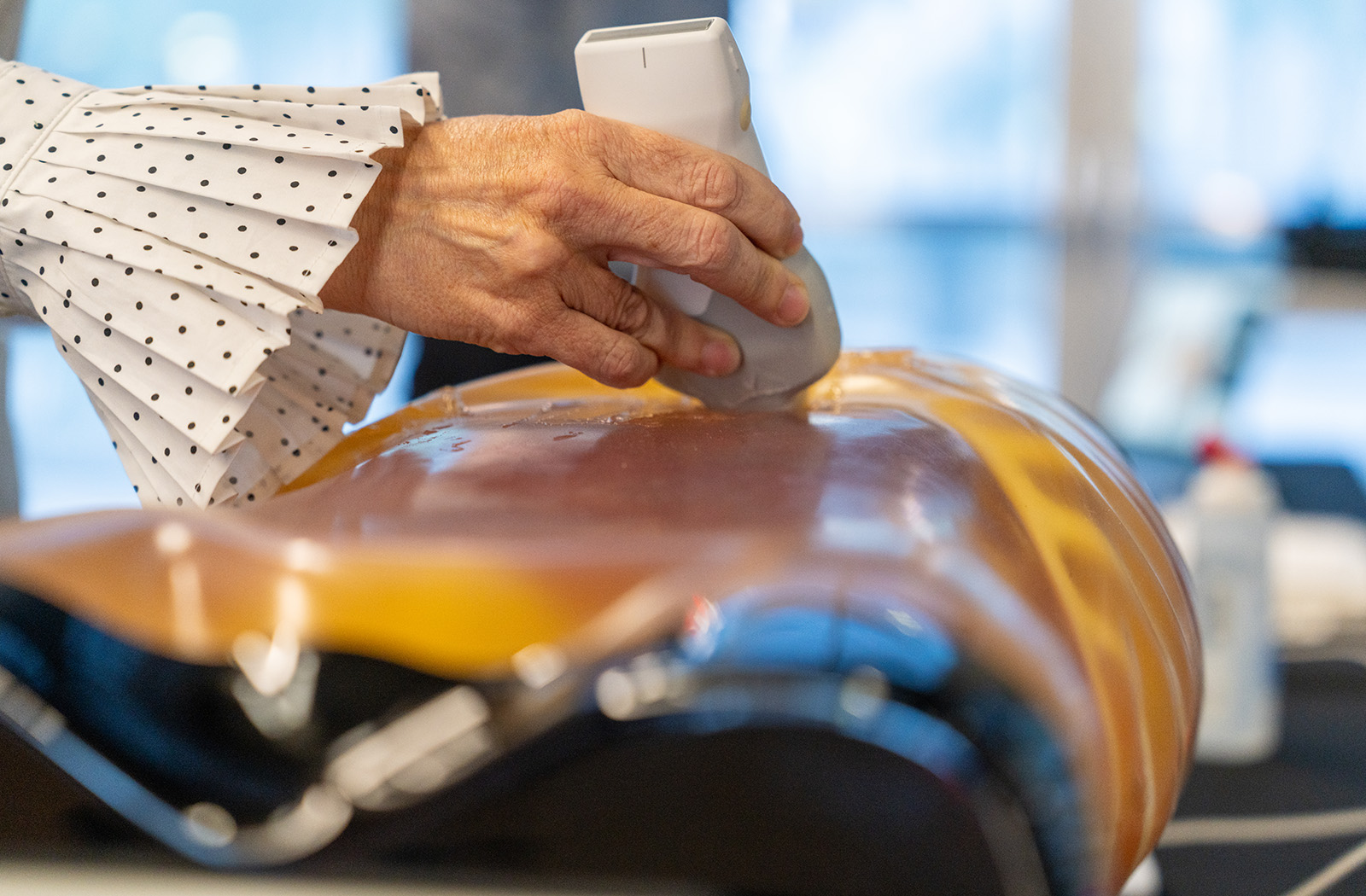
Conference Highlights the Value and Impact of Providing Simulation-Based Education in Health Care

Health care professionals from multiple disciplines were invited to the SIM 2024 Conference — Simulation, Innovation and Medical Education at the University of Arizona College of Medicine – Phoenix to experience the importance of simulation training in medicine.
“A well-run medical simulation center can significantly enhance health care within a community by ensuring health care providers are proficient and prepared. Through realistic scenarios and hands-on practice, medical professionals can refine their clinical skills, decision-making abilities and teamwork dynamics in a safe environment,” explained Jim Lindgren, MD, medical director of the Center for Simulation and Innovation at the U of A College of Medicine – Phoenix and a clinical associate professor of medicine.

Jordan Coulston, MD, assistant dean of Clinical Education at the School of Medicine and Advanced Engineering at Arizona State University, delivered the keynote address, The Future of Simulation: Precision, Education, AI and Beyond. His remarks shed light on the potential of simulation education and where it may be heading.
“You could imagine that most of what we do in the preclinical space and maybe the clinical space could be housed within a set of goggles (virtual reality),” Dr. Coulston said. “That’s pretty amazing because we spend a lot and we do a lot to build a school … but the content can probably be delivered in this immersive experience; and that’s a scalable solution to a problem that we have right now — which is we don’t have enough doctors.”
Utilizing this evolving technology is part of what Dr. Coulston sees as merging the clinical and educational environments — in essence, creating a sort of harmony between the two. By offering students or physicians a wider breadth of training through cultivated simulations, they will be better prepared for the variables they may encounter when caring for patients.
“This is a laboratory where we're testing things out. We're testing out theories. And so remembering that sim is the future classroom, and that to get to the higher level Bloom's Taxonomy, we really have to go into the applied mode and study mode, not into the knowing mode,” Dr. Coulston said. “You're not here just to learn about the five ways in which chest pain presents; you're going to apply what you know about the five ways chest pain presents to a case of chest pain.”
A large part of making this experience more efficient and customized to the individual learner is further implementing aritificial intelligence (AI) to help mimic diverse subsets of the population. So, instead of a simulation scenario strictly being about one particular procedure, it could be extended over a period of longitudinal care.
“We right now have pancreas models that are trained and embedded as chips inside little insulin sensing glucometers that inject insulin into real people. What if we created these avatars that had some physiology to them, so that when we interacted with them, they had authentic outputs? And maybe we could coach them and change their inputs; we get them to exercise or eat differently, and then something different happens,” he said.
Dr. Coulston did note that some of these ideas are not yet feasible, but they are not far off either. And he cautioned that for all its potential, AI does present pitfalls educators must be cognizant of. “Some of this stuff we're going to have to understand and authenticate; there's going to be bias. We are going to generate learners who become over reliant on them,” he said. “But I think that there's an upside here … We can take where we’re at, which is doing amazing simulation, and really make it learner driven; more authentic than we are right now; hopefully more humanistic, but definitely more precise and efficient and scalable.”
Made possible by a generous grant from the Flinn Foundation as part of the Buffmire Lecture Series, the conference offered a full spectrum view of the role of simulation in health care with three distinctive tracks — Administrative, Curricular and Action. In addition to Drs. Lindgren and Coulston, courses were taught by Kelli Lorentsen, MD, curricular co-director, Lorena Navarro, MSHS, RN/BSN, CHSE, clinical lead, Nathan E. Brent, RN, MSN/Ed, CHSE, senior program coordinator, Center for Simulation and Innovation, College of Medicine – Phoenix; and Andrew Wong, MD, an associate professor of family medicine at the college.
Topics focused on best practices for developing simulation curriculum, building and staffing the simulation space, critical components of a simulation scenario and more. Attendees included physicians, nurses and veterinarians from eight different institutions of higher learning and seven health systems — many of whom did not have this type of instruction during their training.

Simulation-based education has proven critical for preparing medical students for future success as they enter their clerkship years. Data from a 2022 study, Performance effects of simulation training for medical students – a systematic review, showed that 96% of students performed better when trained with simulation; and, overall, simulation training resulted in a 22% increase in their test scores.
Through the Center for Simulation and Innovation at the college, medical students and allied health students are provided a transformative learning environment with state-of-the-art technology to build clinical competency before they transition to the clinical environment.
“Simulation plays a pivotal role in medical education by providing a controlled environment where students can hone their clinical skills without risk to patients,” Dr. Lindgren explained. “By replicating real-life scenarios, medical simulations allow students to practice decision-making, critical thinking, and procedural techniques in a safe and deliberate manner.”
It is a hands-on approach, enhancing the learner’s confidence and competence. And by tailoring simulations to align with specific learning objectives the staff of the Center for Simulation and Innovation are able to offer students personalized feedback on a case-by-case basis. “Ultimately, integrating simulation into the medical school curriculum promotes both patient safety and the professional development of future health care practitioners,” Dr. Lindgren said.
About the College
Founded in 2007, the University of Arizona College of Medicine – Phoenix inspires and trains exemplary physicians, scientists and leaders to advance its core missions in education, research, clinical care and service to communities across Arizona. The college’s strength lies in our collaborations and partnerships with clinical affiliates, community organizations and industry sponsors. With our primary affiliate, Banner Health, we are recognized as the premier academic medical center in Phoenix. As an anchor institution of the Phoenix Bioscience Core, the college is home to signature research programs in neurosciences, cardiopulmonary diseases, immunology, informatics and metabolism. These focus areas uniquely position us to drive biomedical research and bolster economic development in the region.
As an urban institution with strong roots in rural and tribal health, the college has graduated more than 1,000 physicians and matriculates 130 students each year. Greater than 60% of matriculating students are from Arizona and many continue training at our GME sponsored residency programs, ultimately pursuing local academic and community-based opportunities. While our traditional four-year program continues to thrive, we will launch our recently approved accelerated three-year medical student curriculum with exclusive focus on primary care. This program is designed to further enhance workforce retention needs across Arizona.
The college has embarked on our strategic plan for 2025 to 2030. Learn more.